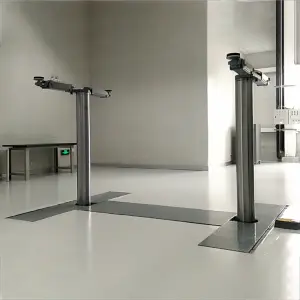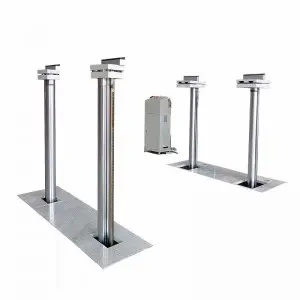
Taking a Closer Look at the Versatile Cylinder: Its Uses and Applications
Cylinders are commonly seen in various industries and applications, serving as essential components in a wide range of equipment and machinery. From hydraulic systems to everyday household items, cylinders play a crucial role in enabling linear motion and converting potential energy into mechanical work. Let’s take a closer look at this versatile mechanical device and explore its different uses and applications.
A cylinder is a three-dimensional geometric shape that consists of two parallel circular bases connected by a curved surface. The term “cylinder” is commonly used to refer to a right circular cylinder, where the bases are perpendicular to the curved surface. However, cylinders can also have elliptical or rectangular bases, depending on the shape of the cross-section.
One of the most common uses of cylinders is in hydraulic systems, where they are used to create linear motion by converting fluid pressure into mechanical force. Hydraulic cylinders consist of a cylindrical barrel, a piston, and one or more seals. When fluid is pumped into the cylinder, it pushes against the piston, causing it to move in a linear direction. This linear motion can be used to lift heavy loads, push objects, or operate various types of machinery.

Taking a Closer Look at the Versatile Cylinder: Its Uses and Applications
Cylinders are also used in internal combustion engines, where they play a crucial role in converting chemical energy into mechanical energy. In a typical four-stroke engine, cylinders house the pistons that move up and down, compressing air and fuel mixture, igniting the mixture, and exhausting the combustion gases. The number of cylinders in an engine determines its power output, with more cylinders typically resulting in higher horsepower.
In manufacturing and fabrication, cylinders are used in various machines and equipment, such as pneumatic actuators, industrial robots, and printing presses. Pneumatic cylinders, for example, are used to create linear motion by using compressed air instead of hydraulic fluid. These cylinders are often used in applications where cleanliness, low maintenance, and precise control are essential.
Cylinders are also integral components in everyday household items, such as locks, door handles, and mechanical pencils. Door locks, for example, use cylindrical pins that align with the key to unlock the mechanism. Door handles also contain cylinders that enable the latch to retract or extend when the handle is turned. Even a simple mechanical pencil relies on a cylindrical tube to hold the graphite lead in place.
In the field of astronomy, cylinders are used in telescopes and cameras to focus light and produce clear images. Cylinder lenses, also known as cylindrical lenses, have a curved surface in one direction and a flat surface in the other. These lenses are often used to correct astigmatism or create a line focus in optical systems.

Taking a Closer Look at the Versatile Cylinder: Its Uses and Applications
Overall, cylinders are versatile mechanical devices that play a crucial role in various industries and applications. Whether in hydraulic systems, internal combustion engines, manufacturing equipment, or everyday household items, cylinders enable linear motion, convert energy, and facilitate mechanical work. Understanding the different uses and applications of cylinders can help us appreciate the importance of these simple yet essential devices in our daily lives.car quick lift
